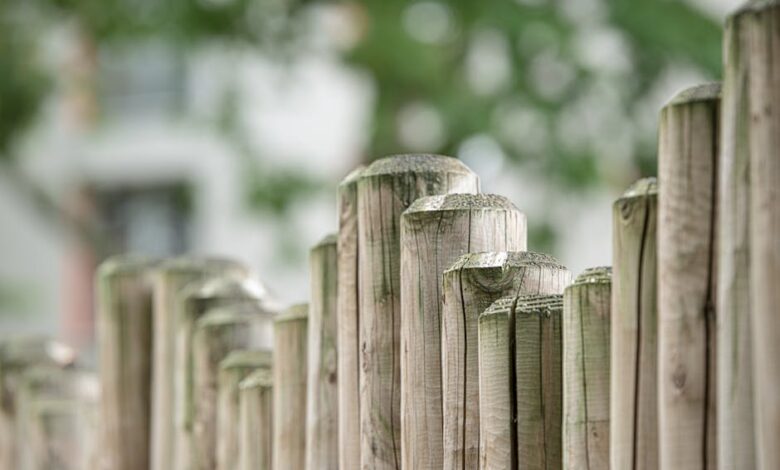Best Free Property Line App

Figuring out exactly where your property lines are can be a real headache! Fences get moved, old surveys get lost, and sometimes, well, things just aren’t clear. Luckily, in this day and age, technology can help. You might be wondering, “Is there a free app that can help me find my property lines?” The answer is a bit complicated, but there ARE some great options to explore, and we’ll break them down for you.
Before we dive into specific apps, it’s super important to understand something: No app is a substitute for a professional survey! These apps are helpful for getting a *general* idea, but they shouldn’t be used for legal disputes, building fences right on the line, or anything where accuracy is crucial. Always consult a licensed surveyor for official property line information. Think of these apps as tools for initial exploration and understanding, not the final word.
Okay, with that important disclaimer out of the way, let’s look at some of the best free property line app options and how they work.
Understanding How These Apps Work
Most of the apps we’ll discuss rely on a combination of your phone’s GPS, publicly available Geographic Information System (GIS) data, and sometimes augmented reality (AR). GIS data is essentially a digital map containing information about property boundaries, parcel lines, and other geographical features. GPS helps pinpoint your location, and the app overlays that location onto the GIS map to show you where your property lines *should* be.
It’s crucial to remember that the accuracy of these apps depends heavily on the accuracy of the underlying GIS data, the strength of your GPS signal, and how well the app is calibrated. Rural areas might have less accurate or less detailed GIS data compared to urban areas. Tall buildings and dense tree cover can interfere with GPS signals, leading to inaccurate readings. That’s why professional surveys are so important for official legal boundary determination.
Free App Options (and Their Limitations)
Let’s be upfront: there isn’t one single app that’s perfectly accurate *and* completely free with no catches. Many apps offer a free trial or a limited free version, while others might be ad-supported. Here are a few that are often mentioned:
- LandGlide: While LandGlide isn’t *completely* free, it’s often cited as a popular choice. They typically offer a free trial period, during which you can access parcel data and view property lines on a map. After the trial, you’ll need a subscription. LandGlide is known for having fairly comprehensive data in many areas, but the subscription cost is something to consider.
- OnX Hunt (or OnX Maps): Primarily aimed at hunters, OnX Hunt can be used to view property lines. While the core functionality focuses on hunting-related features, it does overlay property boundaries on topographic maps. Like LandGlide, it typically offers a free trial followed by a subscription. The free version might have limited features.
- County or City GIS Websites: This isn’t an app, but it’s often the best *free* resource. Many counties and cities provide online access to their GIS databases. You can usually search for a property by address or parcel number and view its boundaries. The interface might not be as user-friendly as a dedicated app, but the data is often directly from the source. Search “[Your County/City] GIS” on Google to see if this is available in your area.
Instead of focusing on finding a 100% free app, consider these points:
- Focus on accuracy over price: A slightly more expensive app with better data and a clearer interface might be worth the investment if you need more reliable information.
- Combine resources: Use a free GIS website to cross-reference the information you get from an app. This can help you identify potential discrepancies.
- Read reviews carefully: Pay attention to what other users are saying about the app’s accuracy and data quality in your specific area.
Safety Tips When Using Property Line Apps
Beyond the accuracy disclaimers, there are safety considerations when using these apps:
- Be aware of your surroundings: Don’t get so engrossed in your phone that you trip, fall, or wander onto someone else’s property unintentionally.
- Respect private property: These apps are tools, not licenses to trespass. Always stay on public land or your own property unless you have permission to be elsewhere.
- Don’t rely on the app in dangerous situations: If you’re hiking in a remote area or near cliffs, don’t depend on the app for navigation. Carry a physical map and compass and know how to use them.
Alternatives to Apps
If you’re not comfortable relying solely on an app, here are some alternative ways to get a better understanding of your property lines:
- Review your property deed: Your deed should contain a legal description of your property. This description can be difficult to interpret, but it’s a starting point.
- Look for visible markers: Sometimes, property corners are marked with metal stakes, concrete monuments, or other physical markers. These can be buried or overgrown, so you might need to do some searching.
- Talk to your neighbors: Your neighbors might have information about the property lines, especially if they’ve lived there for a long time. However, remember that their information might not be entirely accurate.
- Hire a professional surveyor: As we’ve emphasized, a professional survey is the most accurate way to determine your property lines. This is especially important if you’re planning to build a fence, add an addition to your house, or resolve a property dispute.
Frequently Asked Questions
Are these apps accurate enough to build a fence?
Absolutely not! While these apps can give you a general idea, they are NOT accurate enough for construction or legal purposes. Always hire a licensed surveyor to accurately mark your property lines before building anything near the boundary.
Can I use these apps to resolve a property line dispute with my neighbor?
No. Property line disputes are legal matters. Apps are not legal documents. You will need a professional survey and potentially legal counsel to resolve a dispute.
Do these apps work in rural areas?
It depends. The accuracy of the GIS data in rural areas can vary significantly. Some rural areas have very detailed data, while others have less accurate or incomplete information. Check the app’s coverage maps or user reviews to see how well it performs in your area.
What is GIS data?
GIS stands for Geographic Information System. It’s essentially a digital map that contains information about various geographical features, including property boundaries, roads, buildings, and more. This data is often collected and maintained by government agencies.
In conclusion, while the promise of a completely free and perfectly accurate property line app is enticing, the reality is a bit more nuanced. These apps can be helpful tools for initial exploration and gaining a general understanding of your property boundaries. However, they should never be used as a substitute for a professional survey, especially when it comes to important decisions like building fences or resolving property disputes. Remember to prioritize accuracy, combine resources, and always be aware of your surroundings when using these apps. Your best bet for truly knowing where your property begins and ends is to contact a licensed surveyor. They are the trained professionals who can provide you with legally defensible property line information.
Related Posts
| Best Free Property Line Apps |
| What Is The Best Free App For Finding Property Lines? |



